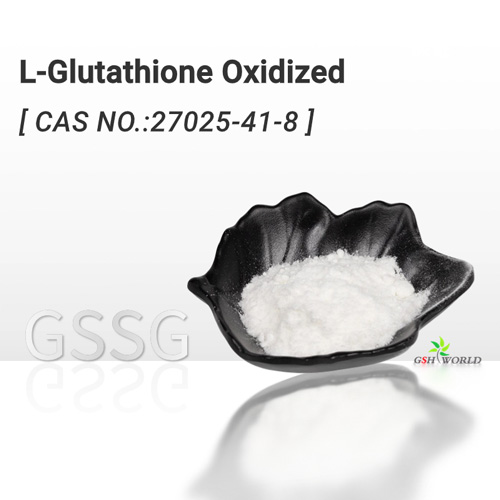Detection significance:
Oxidized glutathione (GSSG) is an oxidized form of glutathione (GSH), also known as dithioglutathione, which is the oxidation of two molecules of glutathione.
GSSG is reduced to GSH by glutathione reductase, so most of it is present in reduced form in the body.
The content of GSH and GSSG and the ratio of GSH/GSSG in cells can reflect the REDOX state of cells well.
Glutathione can react with 5,5 ‘-dithio-bis – (2-nitrobenic acid) (5,5’ -dithiobis-2-nitrobenoic acid, DTNB) to produce 2-nitro-5-mercaptobenic acid, which is a yellow product. It has maximum light absorption at wavelength 412nm.
Operation steps:
1, Sample processing
Organization: According to Organizational quality (g) :
The proportion of reagent 1 volume (mL) is 1:5 ~10 (it is recommended to weigh about 0.1g tissue and add 1mL reagent 1) for ice bath homogenization (the homogenizer/mortar is pre-cooled on the ice in advance).
12000g, centrifuge at 4℃ for 10min, take the supernatant and place it at 4℃ to be measured. If the test cannot completed temporarily, it can stored at -80℃ (can stored for 3 days).
Bacteria and cells:
According to the number of cells (106) : the reagent volume (mL) is 5~10: The ratio of 1 (it is recommended that 5 million cells be added with 1mL of reagent 1), repeated freezing-thawing for 2-3 times (can be frozen in liquid nitrogen, dissolved in 37℃ water bath) or ice bath ultrasonic crushing cells (200w power, ultrasonic 3s, 10s interval, repeated 30 times), 12000g centrifugation for 10 minutes, supernant is taken and placed on ice to be measured.
If the test cannot completed temporarily, it can stored at -80℃ (can stored for 3 days).
Blood treatment
Plasma: Centrifuge the collected anticoagulant blood at 4℃, 600g for 10 minutes, absorb the upper plasma into another test tube, add the same volume of reagent 1, boiling water bath for 5 minutes (wrap the sealing film to prevent bursting).
Then centrifuge 12000g at room temperature for 10 minutes, transfer the supernatant into a new test tube and place it at 4℃ for testing. If the test cannot completed temporarily, store it at -80℃ (can stored for 3 days).
2, Measurement steps
(1), The spectrophotometer/enzyme marker preheated for more than 30min,
the wavelength adjusted to 412nm, and the distilled water of the spectrophotometer zeroed.
(2), Reagent 3 placed in 37℃ water bath for 30min.
(3), Dilution of standard product: Absorb 10mg/mL standard solution and dilute it with distilled water to 125μg/mL, 62.5μg/mL, 31.25μg/mL, 15.625μg/mL, 7.8125μg/mL, 3.90625μg/mL.
(4), standard dilution table:
Note: 20µL of standard material required for each standard tube in the following experiment (be careful not to test absorbance directly in this step).
(5), Operation table: (Add the following reagents into the microglass colorimetric dish / 96-well plate)
3, Calculation of oxidized glutathione content
Draw standard curve:
The standard curve drawn with the concentration of the standard tube (μg/mL) as the horizontal coordinate x and (ΔA standard -ΔA blank) as the vertical coordinate y.
According to the standard curve, bring (ΔA determination -ΔA blank) into the formula to calculate the sample concentration (μg/mL).
Oxidized glutathione content calculation:
(1) Calculated by protein concentration: GSSG content (μg/mg prot)=x ×V sample ÷ (V sample ×Cpr)=x÷Cpr
(2) Calculated by sample quality: GSSG content (μg/g mass)=x ×V sample ÷(V sample ÷V sample total ×W)=x÷W
(3) Calculated by the number of cells/bacteria: GSSG content (μg/106 cell)=x ×V sample ÷(V sample ÷V sample total ×N)=x÷N
(4) Calculated by liquid volume: GSSG content (μg/mL) =2x
V sample total:
Total volume of supernatant, 1mL;
V sample: Supernatant liquid volume in the reaction system, 20μL=0.02mL;
W: Sample quality, g;
Cpr: Protein concentration in supernatant, mg/mL;
N: Number of cells/bacteria, measured in 106;
2: Dilution of plasma (blood cells) doubled.
Note:
1, If you are not sure about the level of Oxidized glutathione content in the sample, you can dilute several gradients before measuring.
2, If the measured light absorption value exceeds the linear range, you can increase the sample size or dilute the sample before testing.
3, Because reagent 1 contains a protein precipitator, the supernatant cannot used for protein concentration determination. For determination of protein content, separate tissue required.





